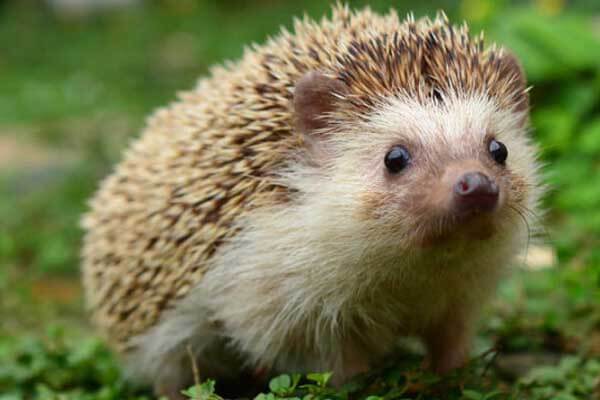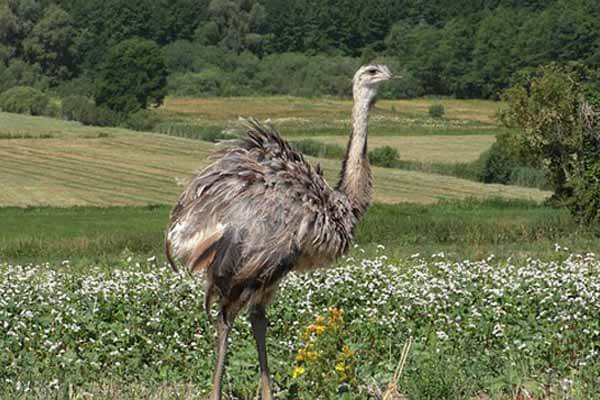Only perfectly healthy individuals are suitable for reproduction, about whom it is known that during the first three generations there were no individuals with wobbly hedgehog syndrome (WHS).
This is what pedigrees and contacts with breeders are for. There’s no need to mate animals that are unhealthy. Just one disease is enough to make the hedgehog unsuitable for breeding.
Females and males to be mated should not have common relatives until the third generation (grandparents). It is allowed to reduce the individuals to common great grandparents.
The age of the female at the moment of first birth should be not less than 6 months, but also should not exceed the mark in a year. Accordingly, a female at the age of 5 to 11 months will be suitable. The first birth after a year is always too dangerous for hedgehogs.
The age of a male is practically irrelevant, but it must be remembered that a too mature male is unlikely to dance around a female, and a young female may refuse. Therefore, it is best to knit a middle-aged, well-balanced, and perfectly healthy male.
Mate hedgehogs should not be mated more than twice a year.
After you have found a pair for your hedgehog, make sure that a quiet place is provided for the female during pregnancy. In the place where the cage with hedgehogs and hedgehogs will be located, no strangers, other pets, and children should have access. It should be very quiet and peaceful there.
The mating process starts with the hedgehogs being “co-seated”. Traditionally, the female is implanted with the male, but it is not necessary. The hedgehogs mate perfectly in the territory of the female or a new cage at all.
In a “romantic cage,” it should be the same as in the home for one hedgehog but in two copies. When feeding insects, hedgehogs should be fed separately so as not to provoke a fight over food. The wheel is best pulled out. Huts should also be duplicated, even though most hedgehogs sleep together.
Do not keep hedgehogs together for more than a week, and do not watch them while mating, as some hedgehogs, are likely not to be active as long as there is someone else around, although some individuals do not care about witnesses.
Hedgehogs may make completely different sounds (squeaking) during the time they live together, but this does not affect the number of children.
After a week (sometimes earlier) of hedgehogs living together, it is best to plant. As a rule, there are no changes in their lives, but try not to overfeed the male, because during the gonna period they are very prone to overeating and this in no way depends on the mating results.
After mating, the female should be transferred to more fatty food. The percentage of fatness must be about 20-22%. However, it is not necessary to change the total diet, just add more fatty foods from what she eats. The food should contain calcium and vitamins containing it, as it takes a lot to produce milk. In principle, any stress is undesirable. In the first two weeks, the female cage should have a wheel, but then it should be removed.
It is sometimes difficult to understand whether the female is pregnant or not. She can eat everything you give her as a pregnant woman, eat away and show in every possible way what a poor and miserable pregnant woman she is, but after the due date does not give birth to any children. Maybe the opposite, the female may not show any signs of pregnancy, do not gain any weight, but one day you will just hear from her house characteristic sounds (squeaking). In principle, a pregnant female should round her sides a bit, but there is no need to feel her, otherwise, the babies can be damaged and the delivery will be more difficult. Two weeks before the expected delivery date, you should put a large house in the hedgehog’s cage, where she can fitfully with the babies.
After 30 days from the first day of confinement, the place you took to the maternity clinic should be also quiet. The birth can take place from that day and up to 35 days from the last day of planting. Pregnancy between 31 and 35 days is normal.
Realizing that childbirth can still be difficult sometimes, even though the hedgehog usually beeps. If the hedgehog behaves strangely, but no one beeps, then watch her carefully, most likely she gave birth. Do not disturb her, just try to help her without annoying her. She will only need to change the water in her drinker and give her food for the next 10-12 days. After seven days you can try to change some of the dirty fillers, but if it will irritate her, it’s best not to do anything.
All this is done so that the hedgehog does not eat all his hedgehogs. As friendly as your hedgehog is, during childbirth and the first days of raising children, you are a predator for her, threatening her health and the health of her hedgehog. She can kill squeaky babies so that the predator, that is, you can’t find a nest by squeaking.
Hedgehogs have trouble giving birth, but rarely enough to worry about it. Most of the problems are because hedgehogs are simply afraid to give birth, and during stress, their labor activity slows down until the female decides that it is safe to give birth now. If she can’t calm down, then delivery can ruin her, so during delivery, it’s best to simply leave with the lights off. The vet should only be seen if the hedgehog is bleeding, spinning in the cage, and occasionally flinching. If she is just lying on her side, shivering and not responding to external stimuli, it is probably too late to go.
If the delivery has been successful, two weeks have passed and the hedgehog is lying quietly outside the house, you can tame the hedgehog and finally clean up the cage. Change half the bedding while the Hedgehog eats, if you have time, you can try to lift the house, count the hedgehog, and even take one of them in your arms. You should take them one at a time and hold them for a few minutes. Holding time should be increased gradually, as well as the number of hedgehogs in your hands. During this time, you should keep a close eye on the female, if you see that she is nervous, it is best to put the hedgehog in its place and leave. Soon she will be able to sleep peacefully outside the house while you communicate with the babies.
Children need to be held in their arms every day for sure, then they will grow up friendly and completely manual.
The hedgehogs are born practically naked with soft little needles, but they gradually begin to grow harder, like in adults.
There are cases when hedgehogs for one reason or another refuse to feed the hedgehog. You will not be able to feed them on your own, as there are no feeding mixes on the market that are suitable for hedgehogs. And nothing can replace mother’s milk. If the female refuses to feed or does not take all the hedgehogs, they will die. And as pitiful and offensive as it is, it will have to be accepted.
Feeding small hedgehogs can only be successful if you have another recently born female and she is able and willing to feed other people’s babies.
Just like during pregnancy, the breastfeeding mother’s diet should not be changed.
It happens that the newly born female has chair liquefaction within 2-3 days. It’s not diarrhea, it’s just a softer chair if a soft chair is observed in the hedgehog for longer, it’s an alarm signal.
At the age of three weeks, the crumbs left by the mother are picked up from the floor.
At 4-6 weeks of age, she begins to eat herself, actually at this time, they become completely independent. It is at this age that the hedgehog must be seated by gender and do not forget to monitor their relationship.
At the age of 6-8 weeks, the hedgehog is ready to move into a new home.
Sometimes it happens that some hedgehogs are born much smaller than their brothers and sisters. In this case, their condition must be carefully monitored. These hedgehogs are usually considered to be underdeveloped and even when they enter their age, it is advisable to leave them with their mother so that they can eat extra from her. It is crucial to watch their weight, to see if they add and develop. If they do not gain weight or even lose weight, they will most likely not survive. In any case, if a hedgehog is born much smaller than his brothers and does not gain normal weight for a long time, then when selling them should be labeled as pet-only, that is, not for later breeding.
If the hedgehog who has not gained a normal weight are males, it is safe to leave them with the mother, as being considered underdeveloped they are unlikely to hit on the female mother to fertilize her.
Under-feeding hedgehogs may also be associated with inflammation in the nipples of hedgehogs. In this case, the hedgehog, if most of them have already reached independent age, it is necessary to plant, and the nipples of the female to wipe the decontamination solution (ask the veterinarian what would be appropriate), and the remaining weak children to feed through healthy.
It happens that the hedgehogs born have underdeveloped limbs or in difficult births, the mother may have damaged them or bitten them off. Do not put an end to such babies, they can live a normal and full life, no different from healthy brothers.
See also 25 interesting facts about hedgehogs








